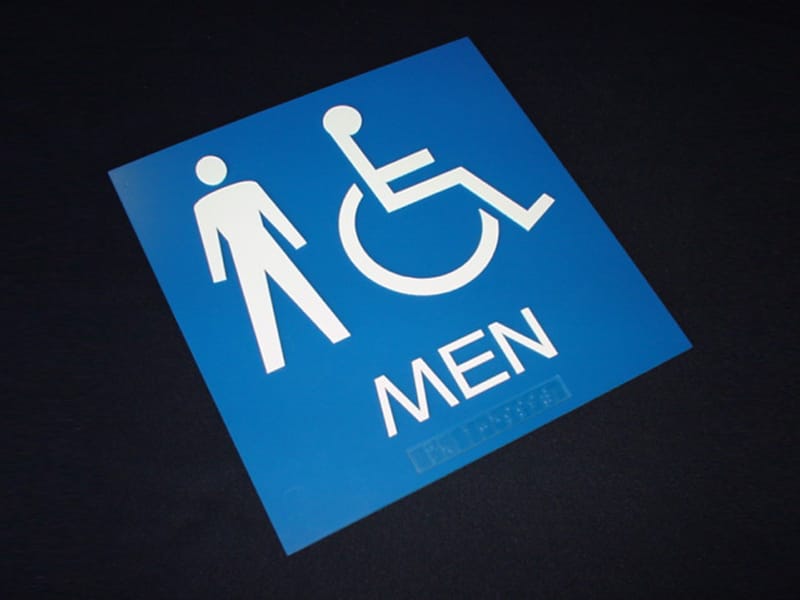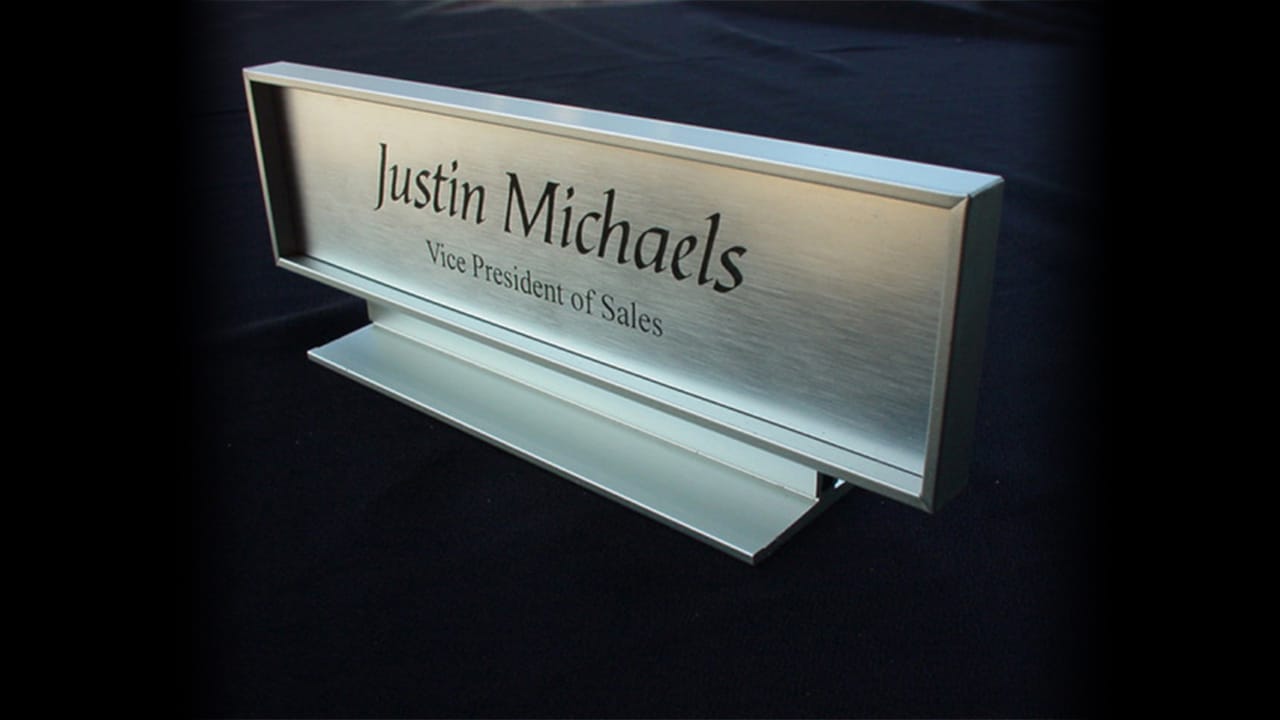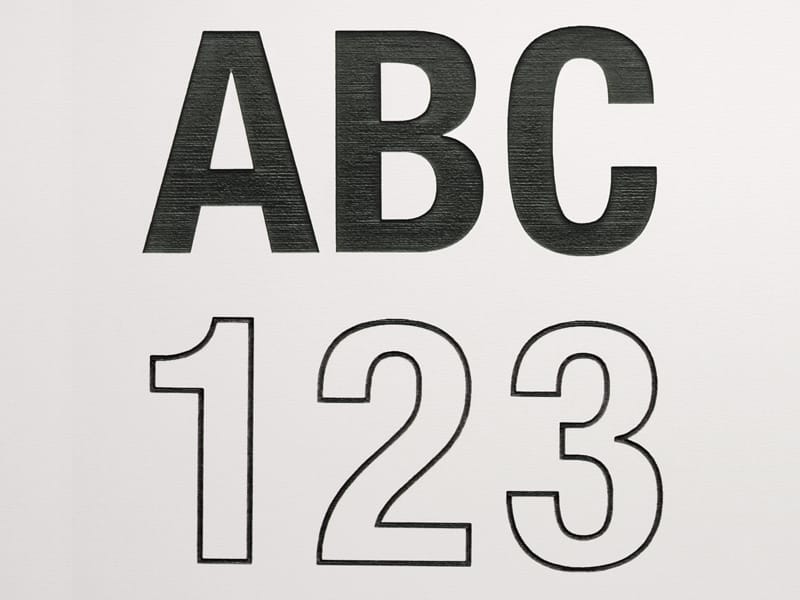Laser Cutting
Laser cutting is the complete removal and separation of material from the top surface to the bottom surface along a designated path.Microsurface plastics are ideal to cut using DLMP technology. The edges created from laser cutting will show virtually zero discoloration. Only a slight residue will remain on the cut edges, which is easy to remove with denatured alcohol or other common solvent. If the use of solvents is not feasible, the residue will harden overnight in most cases.
The example shows a simple square with rounded edges cut from a sheet of microsurface plastic. From the cut edge, the core (bottom) layer of the plastic is visible. The basic capability shown can be extended to nearly any shape, even complex and closely-spaced cuts.









